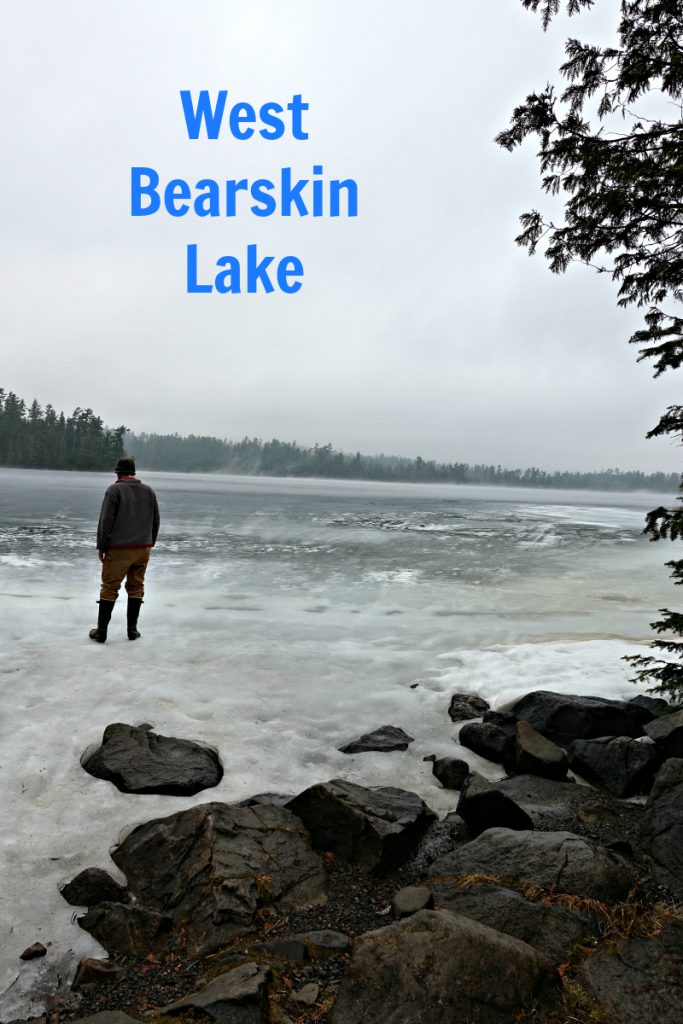There’s one thing we think should be in everyone’s pack.
If you don’t have it, you might have to end your trip early.
You might even put yourself in a life-threatening situation.
At best, if you need it and you don’t have it, you’ll be mighty uncomfortable.
Like it or not, you’ll be happiest if you invest a bit of money in it.
Hopefully, you won’t need it at all; but trust us, it’s worth the extra weight.

Yeah, it’s rain gear.
While I often quip that a good attitude is the best thing you can bring on a canoe trip, rain gear is the actual physical item that it’s truly foolish to leave the canoe landing without. Boundary Waters weather is notably capricious and no matter how often you study the forecast before departure, there’s no guarantee that even the best weather pattern will hold for the entirety of your trip, even if you’re just doing a day trip.
When we say you need rain gear, we’re talking about two specific pieces of apparel: a rain jacket with a hood and rain pants. Unless you like paddling around with a lap full of water, ponchos are for ballparks, not the Boundary Waters.

Remember, a rain jacket is just half of your rain gear formula. We see a lot of people heading into the woods with only a rain jacket. While the no-rain pants rain gear solution might work well for running errands on rainy days, just wearing a rain jacket is in many ways worse than not wearing any rain gear at all. A rain jacket funnels water onto your thighs, eventually drenching your bottom half until you’re far wetter than if you’d foregone rain gear all together. Whatever you do, don’t pair just a rain jacket with cotton pants; if you do, you’ll be wringing pints of rainwater out of your pants at the end of the day.
Your rain gear needs depend on which season you visit the Boundary Waters in. In spring and fall, when the average temperature is the 50s and 60s, you’ll want a heavy duty set of rain gear. While we tend to associate hypothermia with winter’s extreme lows, in actuality, hypothermia could set in after just a couple hours of being wet and underdressed in 60 degree weather. In the shoulder seasons, a pair of rain gear bib overalls will prevent “gapping” between your rain pants and rain jacket when you’re sitting in the canoe or in camp. In the summer, you can get away with a lighter weight pair set of rain gear. Frogg Toggs are a great budget-friendly, albeit not super durable, rain gear solution. However, if you plan to make canoe tripping a habit, you’ll be the happiest if you spend a little more money on a set of rain gear from a reputable outdoors company that fits you well and that allows you a full range of motion.
Remember, cold can kill, regardless of if the calendar says January or July. Older adults and young children are the most susceptible to hypothermia, so make sure everyone in your group has a set of waterproof gear that fits them well. In the case of older and/or hand-me-down rain gear, be sure to test out its waterproof qualities before you start your trip. There’s nothing worse than assuming your rain gear is waterproof only to discover that your shoulders are absolutely drenched after two minutes of torrential rain on day one of your trip. The next time you’re washing your car in the driveway, have your kids put on their rain gear and give them a good spray with the hose. Not only will you be in the running for “most fun parent of the year,” you’ll also know whether you need to scout out new rain gear before your next outdoor adventure.
When everyone in your group has great rain gear, you might find that you don’t mind rainy days one bit. Rainy days are great travel days, because covering ground and seeing new sights is a more rewarding way to spend a dreary, drizzly day then huddled under the tarp, playing endless game of cribbage, hoping for the rain to stop. Rain transforms the Boundary Waters into a dewy fairyland that’s a joy to explore . . . when you’re warm and dry.

Whether or not to pack rain gear should never be a question. Always place your rain gear at the top of your pack, just under the top flap and on top of the pack liner so you can easily grab it when the far horizon starts to darken with rain clouds. In one of life’s little paradoxes, if you don’t pack rain gear; it will rain. If you do pack rain gear, you just might be in for beautiful, cloudless days your entire trip.

















 I’ve always loved touring big houses and William Randolph Hearst’s Hearst Castle atop the coastal hills of San Simeon did not disappoint.
I’ve always loved touring big houses and William Randolph Hearst’s Hearst Castle atop the coastal hills of San Simeon did not disappoint. 

 By the time we reached Vegas for our return flight to MSP, we’d seen six national parks, visited 4 states, and traveled approximately 2000 miles. We made it back to Minnesota just in time to catch one final snowstorm of winter 2016-17 and prepare for the busy summer paddling season ahead.
By the time we reached Vegas for our return flight to MSP, we’d seen six national parks, visited 4 states, and traveled approximately 2000 miles. We made it back to Minnesota just in time to catch one final snowstorm of winter 2016-17 and prepare for the busy summer paddling season ahead. 








